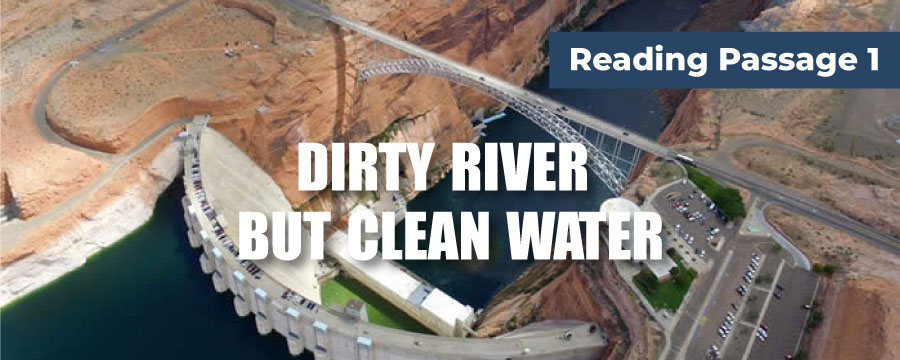
IELTS Recent Mock Tests Volume 2
- Đăng ngày: 05 Dec 2017
- Tests taken: 951,187
Đáp án
Part 1: Question 1 - 13
- 1 NOT GIVEN
- 2 FALSE
- 3 TRUE
- 4 FALSE
- 5 TRUE
- 6 TRUE
- 7 NOT GIVEN
- 8 spring
- 9 sediment
- 10 razorback sucker
- 11 common carp
- 12 visibility
- 13 sand
- 1 NOT GIVEN
- 2 FALSE
- 3 TRUE
- 4 FALSE
- 5 TRUE
- 6 TRUE
- 7 NOT GIVEN
- 8 spring
- 9 sediment
- 10 razorback sucker
- 11 common carp
- 12 visibility
- 13 sand
Part 2: Question 14 - 26
- 14 A
- 15 B
- 16 C
- 17 D
- 18 NOT GIVEN
- 19 TRUE
- 20 NOT GIVEN
- 21 FALSE
- 22 C
- 23 B
- 24 C
- 25 A
- 26 B
- 14 A
- 15 B
- 16 C
- 17 D
- 18 NOT GIVEN
- 19 TRUE
- 20 NOT GIVEN
- 21 FALSE
- 22 C
- 23 B
- 24 C
- 25 A
- 26 B
Part 3: Question 27 - 40
- 27 Sound laws
- 28 fashion
- 29 imperfect
- 30 principle of ease
- 31 FALSE
- 32 NOT GIVEN
- 33 NOT GIVEN
- 34 TRUE
- 35 NOT GIVEN
- 36 NOT GIVEN
- 37 TRUE
- 38 C
- 39 B
- 40 A
- 27 Sound laws
- 28 fashion
- 29 imperfect
- 30 principle of ease
- 31 FALSE
- 32 NOT GIVEN
- 33 NOT GIVEN
- 34 TRUE
- 35 NOT GIVEN
- 36 NOT GIVEN
- 37 TRUE
- 38 C
- 39 B
- 40 A
Leaderboard:
| # | Thành viên | Điểm | Thời gian | |
|---|---|---|---|---|
| Tony Nguyen |  | 9.0 | 15:25 | |
| Thanh Phon |  | 9.0 | 16:41 | |
| Min Htaw |  | 9.0 | 17:33 | |
| 4 | saiteja velisala |  | 9.0 | 18:18 |
| 5 | Trần Thái |  | 9.0 | 18:37 |
| 6 | Meenu Meenu |  | 9.0 | 18:44 |
| 7 | Thanh Khiet |  | 9.0 | 19:25 |
| 8 | Jibek Biktor |  | 9.0 | 19:38 |
| 9 | rozalia_beautiful.96 |  | 9.0 | 19:57 |
| 10 | Ahmad Saleem |  | 9.0 | 20:08 |
Tips for improving your ielts score

How to Do MCQ Type of Questions in ILETS Listening?
Did you notice a spelling error in this article title? Yes, you are right! It should be written as IELTS Listening, not ILETS Listening....
Giải thích chi tiết
Questions 1-7
Do the following statements agree with the information given in Reading Passage?
In boxes 1-7 on your answer sheet, write
| TRUE | if the statement agrees with the information |
| FALSE | if the statement contradicts the information |
| NOT GIVEN | If there is no information on this |
1 Damage caused by fire is worse than that caused by flood
2 The flood peaks at almost 1500 cubic meters every eight years.
3 Contribution of sediments delivered by tributaries has little impact.
4 Decreasing number of chubs is always caused by introducing of trout since mid 20th century.
5 It seemed that the artificial flood in 1996 had achieved success partly at the very beginning.
6 In fact, the yield of artificial flood water is smaller than an average natural flood at present.
7 Mighty floods drove fast moving flows with clean and high quality water.
- 1 Answer: NOT GIVEN
Keywords in Questions
Information location
Q1: Damage caused by fire is worse than that caused by flood.
Paragraph A
Fire is mentioned only in Paragraph A. However, The paragraph actually doesn’t compare the damage caused by those two disasters. So the answer is “NOT GIVEN”.
- 2 Answer: FALSE
Keywords in Questions
Similar words in Passage
Q2: The flood peaks at almost 1500 cubic meters every eight years.
Every eight years or so, that figure rose to almost 3,000 cubic meters ( Paragraph B )
From the text in paragraph B , the figure could rise to 3,000 cubic meters so it would not peak at only 1500 Cubic meters. So the answer is “FALSE”.
- 3 Answer: TRUE
Keywords in Questions
Similar words in Passage
Q3: Contribution of sediments delivered by tributaries has little impact.
Those tributaries are not powerful enough to distribute the sediment in an ecologically valuable way . ( Paragraph C )
The word “deliver” has the same meaning as the word “distribute” and the phrase
“are not powerful enough” justify the phrase “has little impact”. So the answer is “TRUE”.
- 4 Answer: FALSE
Keywords in Questions
Similar words in Passage
Decreasing number of chubs is always caused by introducing of trout since mid -20th century.
Recently, though, its population has crashed. At first sight, it looked as if the reason was that the chub were being eaten by trout introduced for sport fishing in the mid-20th century. But trout and chub co-existed until the Glen Canyon dam was built, so something else is going on. ( Paragraph D )
From the text in paragraph D, first two sentences justify the question statement. However , the decreasing number of chubs is not ‘always’ caused by trout due to the phrase ‘trout and chub co-existed until the Glen Canyon dam was built‘ in the 3rd sentence. So the answer is “FALSE”.
- 5 Answer: TRUE
Keywords in Questions
Similar words in Passage
It seemed that the artificial flood in 1996 had achieved success partly at the very beginning.
The built up sandbanks and infused the river with sediment. Eventually, however, the continued flow washed most of the sediment out of the canyon. ( Paragraph F )
The 1st sentence infer that at the beginning the artificial flood had succeeded to build up sandbanks and infuse the river with sediment. However , the 2nd sentence explain why the success didn’t last long. So the answer is “TRUE”.
- 6 Answer: TRUE
Keywords in Questions
Similar words in Passage
In fact, the yield of artificial flood water is smaller than an average natural flood at present.
At less than 1,200 cubic meters a second, this flood is smaller than even an average spring flood, let alone one of the mightier deluges of the past. ( Paragraph G )
The phrase ‘average spring flood’ refer to the phrase ‘average natural flood ‘. And the text
in paragraph G confirm the information mentioned in the question statement. So the answer is “TRUE”.
- 7 Answer: NOT GIVEN
Keywords in Questions
Similar words in Passage
Mighty floods drove fast moving flows with clean and high quality water.
Those glorious inundations moved massive quantities of sediment through the Grand Canyon, wiping the slate dirty, and making a muddy mess of silt and muck that would make modern river rafters cringe. ( Paragraph G )
Although the noun phrase ‘glorious inundations’ can refer to the phrase ‘mighty floods’ , the text only mentions the impacts of those floods. So the answer is “NOT GIVEN”.
Questions 8-13
Complete the summary below.
Choose NO MORE THAN TWO WORDS from the passage for each answer.
Write your answers in boxes 8-13 on your answer sheet.
The eco-impact of the Canyon Dam
Floods are people’s nightmare. In the past, canyon was raged by flood every year. The snow from far Wyoming would melt in the season of 8 and caused a flood flow peak in Colorado river. In the four decades after people built the Glen Canyon dam, it only could gather 9 together from tiny, undammed tributaries.
Humpback chub population on reduced, why?
Then, several species disappeared including Colorado pike-minnow, 10 and the round-tail chub. Meanwhile, some moved in such as fathead minnows, channel catfish and 11 . The non-stopped flow leaded to the washing away of the sediment out of the canyon, which poses great threat to the chubs because they have poor 12 away from predators. In addition, the volume of 13 available behind the dam was too low to rebuild the bars and flooding became more serious.
- 8 Answer: spring
Keywords in Questions
Similar words in Passage
The snow from far Wyoming would melt in the season of ________ and caused a flood flow peak in Colorado river
Spring Snow from as far away as Wyoming would melt and swell the Colorado river to a flow that averaged around 1,500 cubic metres (50,000 cubic feet) a second. ( Paragraph B )
_From the question, the missing word must be a noun. Although the word ‘Spring’ in the text is an adjective, Spring is still a noun referring to a season.
_Thus, the answer is Spring
- 9 Answer: sediment
Keywords in Questions
Similar words in Passage
In the four decades after people built the Glen Canyon dam, it only could gather __________ together from tiny, undammed tributaries.
However, in the four decades since the building of the Glen Canyon dam, just upstream of the Grand Canyon, the only sediment that it has collected has come from tiny, undammed tributaries. ( Paragraph B )
_From the question, the missing word must be a noun.
The word ‘gather’ has the same meaning as the word ‘collect’.
_The text in paragraph B could be paraphrased clearly that ‘it collected sediment from tiny, undammed tributaries’. Thus, the answer is Sediment
- 10 Answer: razorback sucker
Keywords in Questions
Similar words in Passage
Q10. Then, several species disappeared including
Colorado pike-minnow, ______ and the round-tail chub .
In the years since the Glen Canyon dam was built, several species have vanished altogether. These include the Colorado pike-minnow, the razorback sucker and the round-tail chub. ( paragraph E )
_From the question, the missing word must be a noun referring to a species like Colorado-pike minnow or the round-tail chub. The word ‘disappeared’ has the similar meaning to the word ‘ vanished’
_The text could be paraphrased to this sentence: ‘ In the years since the Glen Canyon dam was built , several species have disappeared including the Colorado pike-minnow , the razorback sucker and the round-tail chub .
_The answer must be the razorback sucker
- 11 Answer: common carp
Keywords in Questions
Similar words in Passage
Q11. Meanwhile, some moved in such as fathead minnows, channel catfish and ________
Meanwhile, aliens including fathead minnows, channel catfish and common carp, which would have been hard, put to survive in the savage waters of the undammed canyon, have moved in. ( Paragraph E )
_From the question , the missing word must be a noun referring to a species like fathead minnows or channel catfish
_The text could be paraphrased to this sentence: ‘Meanwhile, aliens have moved in such as fathead minnows, channel catfish and common carp. ‘
_The answer must be common carp.
- 12 Answer: visibility
Keywords in Questions
Similar words in Passage
Q12: The non-stopped flow leaded to the washing away of the sediment out of the canyon, which poses great threat to the chubs because they have poor _______ away from predators.
The chub were well adapted to the poor visibility created by the thick, red water which gave the river its name, and depended on it to hide from predators. Without the cloudy water the chub became vulnerable. ( Paragraph D)
_From the question, the missing word must be a noun referring to chub’s ability.
_From the text, we could understand that the chubs can adapt to their poor visibility only because of the cloudy water consisting of the sediment.
_Thus , the disappearance of sediment poses the great threat to the chubs because it has poor visibility
_The answer is visibility
- 13 Answer: sand
Keywords in Questions
Similar words in Passage
Q13: In addition, the volume of _______ available behind the dam was too low to rebuild the bars and flooding became more serious.
This problem was avoided in 2004, but unfortunately, on that occasion, the volume of sand available behind the dam was too low to rebuild the sandbanks
_The missing word must be a now.
_The text could be shorted out to:’ The volume of sand available behind the dam was too low to rebuild the sandbanks. Thus, the answer must be sand.
READING PASSAGE 1
You should spend about 20 minutes on Questions 1-13, which are based on Reading Passage 1 below.

Dirty River But Clean Water
Floods can occur in rivers when the flow rate exceeds the capacity of the river channel, particularly at bends or meanders in the waterway. Floods often cause damage to homes and businesses if they are in the natural flood plains of rivers. While riverine flood damage can be eliminated by moving away from rivers and other bodies of water, people have traditionally lived and worked by rivers because the land is usually flat and fertile and because rivers provide easy travel and access to commerce and industry.
A Fire and flood are two of humanity’s worst nightmares. People have,therefore,always sought to control them. Forest fires are snuffed out quickly. The flow of rivers is regulated by weirs and dams. At least, that is how it used to be. But foresters have learned that forests need fires to clear out the brash and even to get seeds to germinate. And a similar revelation is now – dawning on hydrologists. Rivers – and the ecosystems they support – need floods. That is why a man-made torrent has been surging down the Grand Canyon. By Thursday March 6th it was running at full throttle, which was expected to be sustained for 60 hours.
B Floods once raged through the canyon every year. Spring Snow from as far away as Wyoming would melt and swell the Colorado river to a flow that averaged around 1,500 cubic metres (50,000 cubic feet) a second. Every eight years or so, that figure rose to almost 3,000 cubic metres. These floods infused the river with sediment, carved its beaches and built its sandbars.
C However, in the four decades since the building of the Glen Canyon dam, just upstream of the Grand Canyon, the only sediment that it has collected has come from tiny, undammed tributaries. Even that has not been much use as those tributaries are not powerful enough to distribute the sediment in an ecologically valuable way.
D This lack of flooding has harmed local wildlife. The humpback chub,for example, thrived in the rust-redwaters of the Colorado. Recently, though, its population has crashed. At first sight, it looked as if the reason was that the chub were being eaten by trout introduced for sport fishing in the mid-20th century. But trout and chub co-existed until the Glen Canyon dam was built, so something else is going on. Steve Gloss, of the United States’ Geological Survey (USGS), reckons that the chub’s decline is the result of their losing their most valuable natural defense, the Colorado’s rusty sediment. The chub were well adapted to the poor visibility created by the thick, red water which gave the river its name, and depended on it to hide from predators. Without the cloudy water the chub became vulnerable.
E And the chub are not alone. In the years since the Glen Canyon dam was built, several species have vanished altogether. These include the Colorado pike-minnow, the razorback sucker and the round-tail chub. Meanwhile, aliens including fathead minnows, channel catfish and common carp, which would have been hard, put to survive in the savage waters of the undammed canyon, have moved in.
F So flooding is the obvious answer. Unfortunately, it is easier said than done. Floods were sent down the Grand Canyon in 1996 and 2004 and the results were mixed. In 1996 the flood was allowed to go on too long. To start with,all seemed well. The built up sandbanks and infused the river with sediment. Eventually, however, the continued flow washed most of the sediment out of the canyon. This problem was avoided in 2004, but unfortunately, on that occasion, the volume of sand available behind the dam was too low to rebuild the sandbanks. This time, the USGS is convinced that things will be better. The amount of sediment available is three times greater than it was in 2004. So if a flood is going to do some good, this is the time to unleash one.
G Even so, it may turn out to be an empty gesture. At less than 1,200 cubic metres a second, this flood is smaller than even an average spring flood, let alone one of the mightier deluges of the past. Those glorious inundations moved massive quantities of sediment through the Grand Canyon,wiping the slate dirty, and making a muddy mess of silt and muck that would make modern river rafters cringe.
--------
Great thanks to volunteer Lan Nguyen who has contributed these explanations and markings.
If you want to make a better world like this, please contact us.





